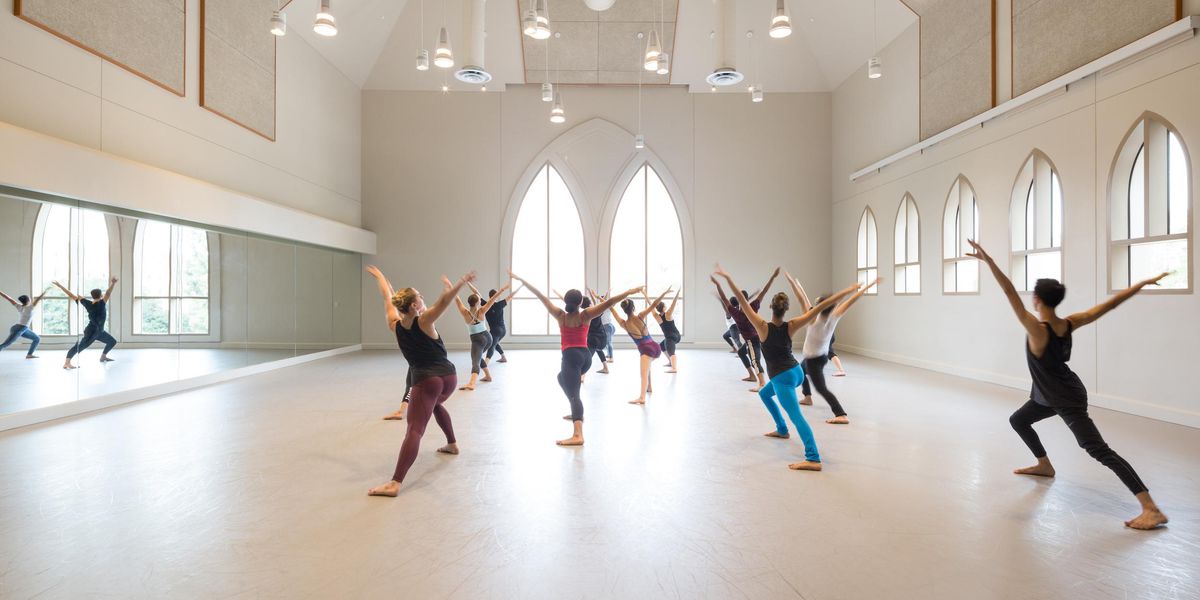Pennsylvania Ballet
February 7–10, 2013
Merriam Theater
Philadelphia, PA
Performance reviewed: Feb. 9, evening
No one choreographs a slouch that slips into bountiful pirouettes as well as Twyla Tharp. And no one can perform it as well as the mercurial Mikhail Baryshnikov. That said, Zachary Hench did a valiant job as the lead in Push Comes to Shove, which entered PAB’s repertoire in 2008. The ballet splices vaudevillian shtick and technical sparkle into a playful scenario to music by Haydn and a rag by Joseph Lamb. If Hench was less awesomely dexterous than Baryshnikov in 1976, he still rendered the pelvic swivels, bursts of virtuosity, and broad feints with aplomb. Amy Aldridge was deliciously funny as one of his sidekicks and Lauren Fadeley deliriously happy as the other. The groupings of 30 dancers in stylish costumes by Santo Loquasto lent complexity and fun, and built up to a zany, lids-off (and hats off) finale. It made me wonder why this ballet is not performed more often. (Wouldn’t Damian Woetzel have been fabulous in it?)
Zachary Hench in Tharp’s Push Comes to Shove. Photo by Alexander Iziliaev, Courtesy PAB
Push Comes to Shove
was a rousing conclusion to a well chosen mixed bill. First came Square Dance, an upbeat (though minor) Balanchine work. Here Aldridge was a bit stiff, too intent on smiling instead of allowing her dancing to project her joy. But the male lead, Jermel Johnson (also occasionally guilty of a pasted-on smile), was a gracious host, inviting us into the Balanchine idiom. His slow solo was especially fluid.
Amy Aldridge and Jermel Johnson in Balanchine’s
Square Dance.
Photo by Alexander Iziliaev, Courtesy PAB
.
Then followed Wheeldon’s complete After the Rain, both the rarely performed Part I and the acclaimed Part II. The first part, a sextet, was well danced, though I missed the Rothko-like backdrop that usually adds a sense of foreboding before lifting to reveal the incredible lightness that is the celebrated duet. That duet belongs to Wendy Whelan, who created the woman’s role partnered by Jock Soto. But Julie Diana was an absolute dream: poignant, loving, ethereal, precise, and sweet. The woman and man (in this case, Hench) connect by gently grazing or hooking the other’s limbs. Diana performed details, like placing her hands in reverse prayer position behind her as she was being lifted, with precision and tenderness. Her delicacy, the simplicity of Wheeldon’s gestures, and the haunting Arvo Pärt music (played live by violinist Shannon Lee and pianist Martha Koeneman) infused the ballet with a rich melancholy. (Perhaps the fact that Diana and Hench are married contributed to the intimacy. Her kiss on his forehead might be new.) Just as happens when this ballet is performed at New York City Ballet, the audience got very quiet. Afterward, you emerged as though from a private reverie.
This was an exciting program, showing the company’s longtime foundation in Balanchine ballets while also revealing a contemporary sensibility that ranges from deeply moving to utterly delightful.
Pictured at top: Julie Diana and Zachary Hench in
After the Rain.
Photo by
Alexander Iziliaev, Courtesy PAB
.




